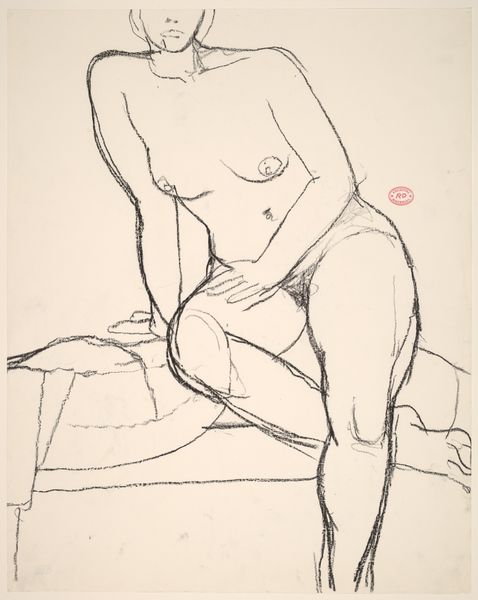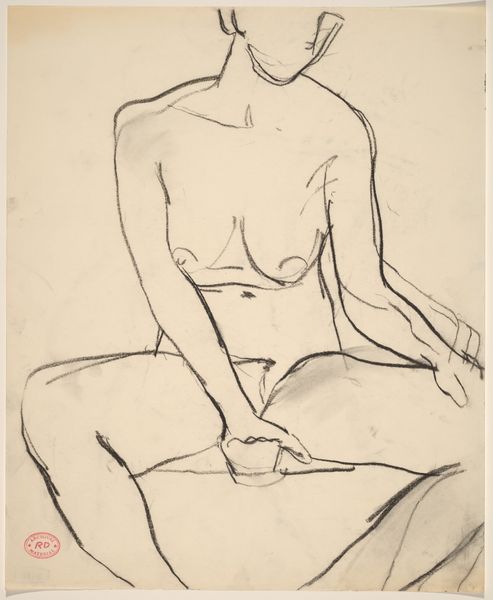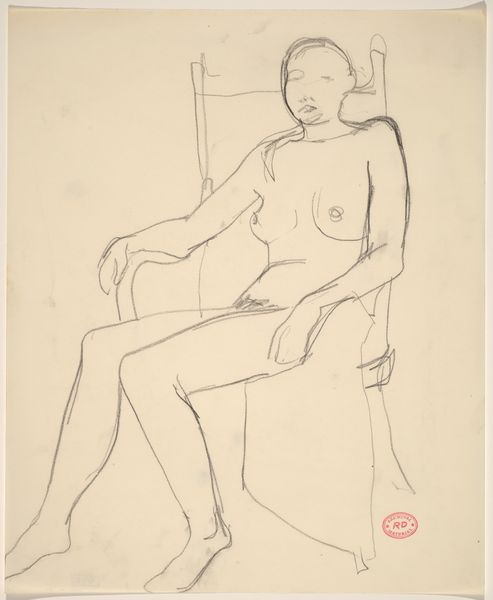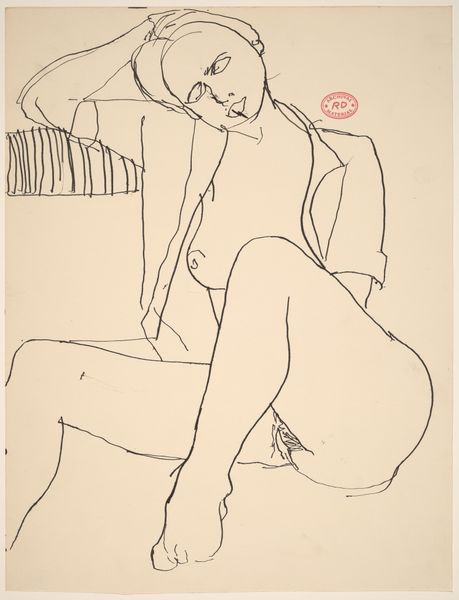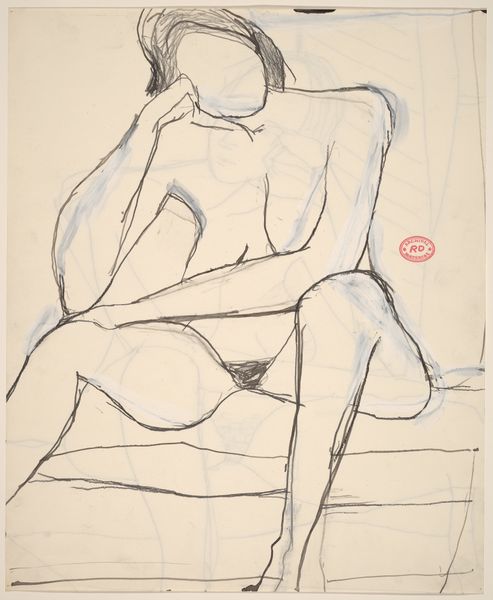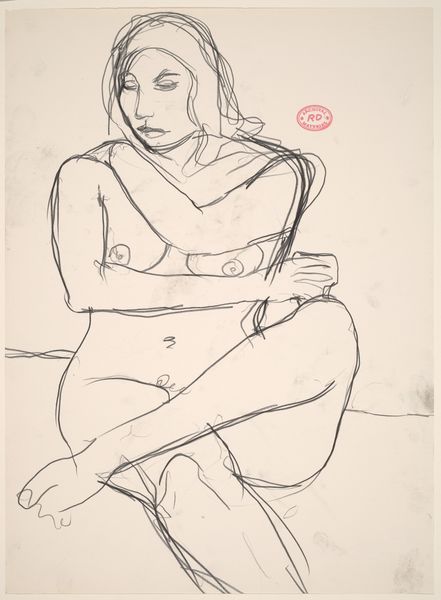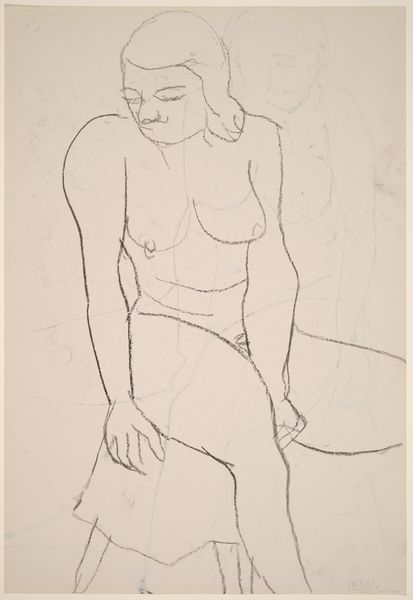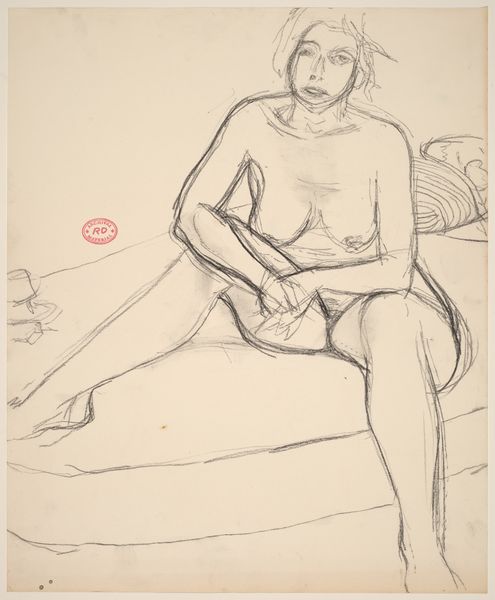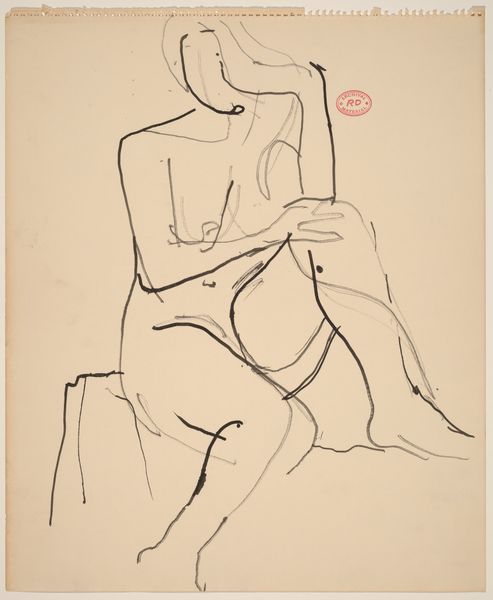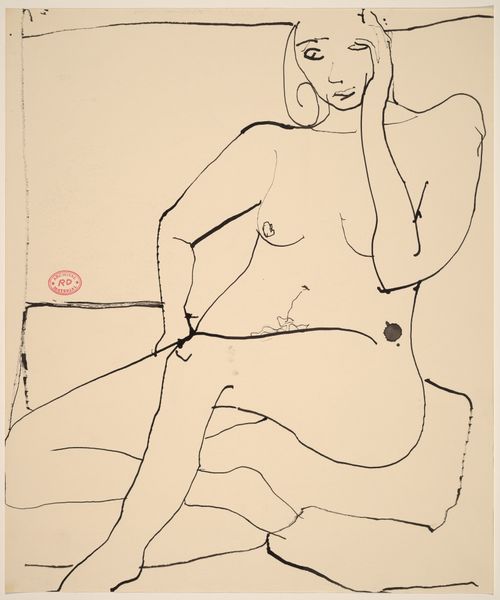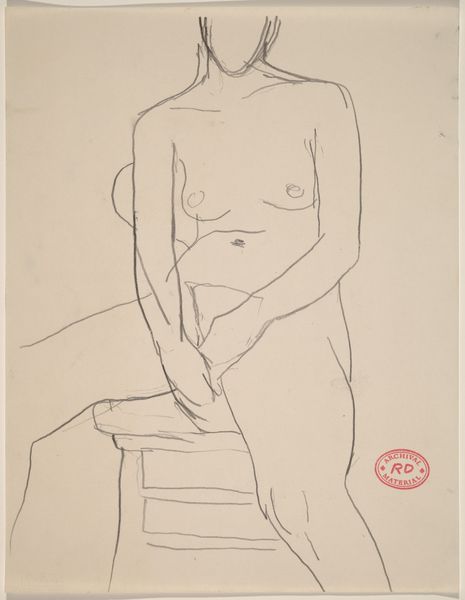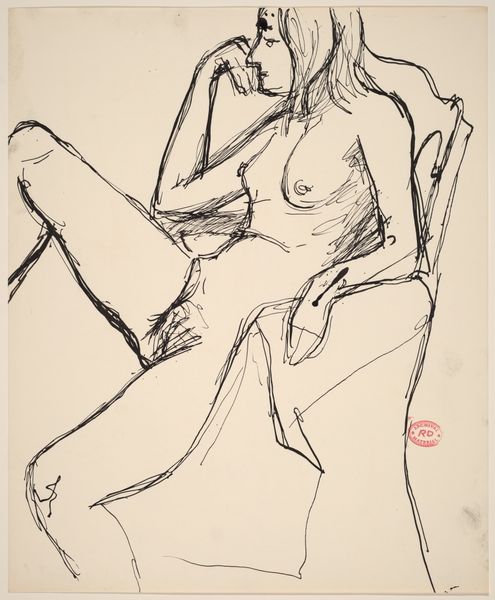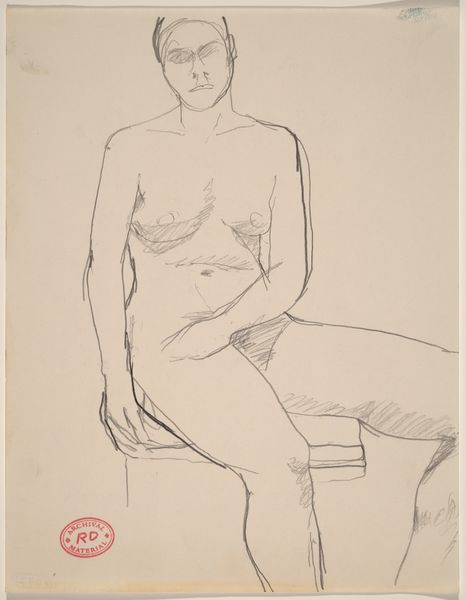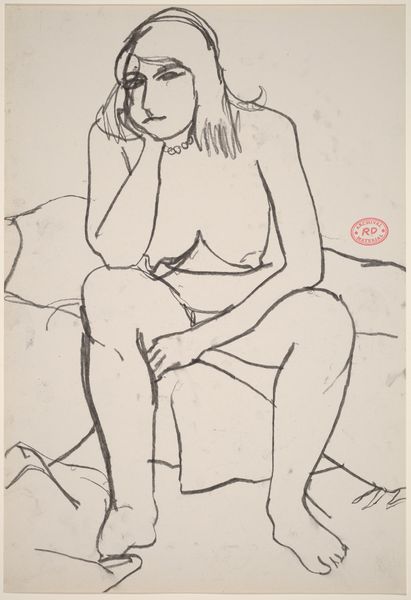![Untitled [seated female nude with clasped hands] [recto/verso] by Richard Diebenkorn](/_next/image?url=https%3A%2F%2Fd2w8kbdekdi1gv.cloudfront.net%2FeyJidWNrZXQiOiAiYXJ0ZXJhLWltYWdlcy1idWNrZXQiLCAia2V5IjogImFydHdvcmtzL2MzYTI5NGE5LWI3YTQtNDkxOS1hMWMxLTkwYTJjZTcyMjY4Zi9jM2EyOTRhOS1iN2E0LTQ5MTktYTFjMS05MGEyY2U3MjI2OGZfZnVsbC5qcGciLCAiZWRpdHMiOiB7InJlc2l6ZSI6IHsid2lkdGgiOiAxOTIwLCAiaGVpZ2h0IjogMTkyMCwgImZpdCI6ICJpbnNpZGUifX19&w=3840&q=75)
Untitled [seated female nude with clasped hands] [recto/verso] 1955 - 1967
0:00
0:00
drawing, pencil
#
portrait
#
drawing
#
pencil sketch
#
figuration
#
bay-area-figurative-movement
#
pencil drawing
#
pencil
#
portrait drawing
#
academic-art
#
nude
Dimensions: overall: 43.2 x 31.8 cm (17 x 12 1/2 in.)
Copyright: National Gallery of Art: CC0 1.0
Curator: Look at this compelling drawing. It's an "Untitled" piece by Richard Diebenkorn, created sometime between 1955 and 1967, a pencil sketch of a seated female nude. Editor: There’s a haunting vulnerability to it, don't you think? The simplicity, the sparse lines...almost as if she's a memory fading on the page. It reminds me of a Giacometti sculpture, only on paper. Curator: It’s interesting you say that because, from a material perspective, Diebenkorn’s choice of humble graphite pencils contrasts starkly with, say, bronze. This emphasizes accessibility. The artist makes visible the direct, unfiltered trace of his hand, resisting the slickness and perceived permanence often associated with high art. We could consider the impact of readily available art supplies and what this accessibility enables. Editor: I get that. But there's something beyond the accessibility – the model’s posture, the clasped hands, the slightly downturned gaze. It makes you wonder about the relationship between artist and model in that space, the intimacy, and vulnerability that it asks of both. You sense a deep interiority that makes me almost protective. Curator: It's important to consider that the commodification of the nude form—as a historically prevalent, if fraught, subject within art— intersects with prevalent social hierarchies. Who has been historically authorized to represent whom, and why? How might the artistic labor of depicting this nude be interpreted in connection with existing gendered power dynamics of mid-century American culture? Editor: Precisely, it’s that cultural echo that’s palpable, right? Beyond the materials and the immediate making, I keep finding myself circling back to the figure's quiet introspection, that feeling like she is caught between revealing herself and withdrawing at the same time. You wonder, where does her own sense of self reside within Diebenkorn's line? It resonates beyond the art-historical context of the era. Curator: Right. The availability of such materials can facilitate representation, but not necessarily justice. We must analyze the means of production and their complicated entanglements with power, not merely celebrate it as artistic choice. Editor: Absolutely. And sometimes the deepest understanding emerges from that space between intent and reception. Curator: Indeed. It leaves us to consider the role of context in meaning-making, even as we contend with material realities. Editor: Exactly, because art always lives between what's made and what we bring to it.
Comments
No comments
Be the first to comment and join the conversation on the ultimate creative platform.
